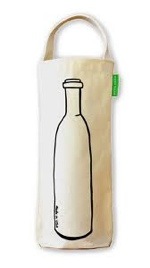
Higher Rates of Wine Consumption Reduces Alcohol-Related Traffic Fatality Rates in the US
| January 22, 2012
There has been many studies performed examining the economic effect of alcohol policies in the United States (i.e. taxes and minimum drinking age), however very little has been done regarding the distribution of these alcoholic beverages. Currently in the United States, there is significant variation from state to state regarding how alcohol is sold within their borders. The most common concern is that increased alcohol availability is more dangerous for consumers, in regards to policies related to alcohol distribution and traffic fatalities. Many policy makers believe that the total amount of alcohol per beverage is more relevant than the type of alcohol that is consumed.
There is much debate whether or not to allow the sale of certain types of alcohol in grocery stores in the United States. Lobbyists claim that by introducing wine into grocery stores, there would be increased alcohol consumption and would lead to higher alcohol-related traffic fatalities. On the other hand, state and local government would benefit from having wine sold in grocery stores, as they would be able to collect taxes or other revenue on each bottle purchased. There hasn’t been any research clearly linking the sales of wine in grocery stores with higher road fatalities, so the claims by these lobbyists seem somewhat unfounded. To date, most of the research has involved examining alcohol in general in relation to traffic fatalities, and has not examined different types of alcohol and their respective contributions to traffic fatalities in the United States.
A recent study aimed to address the selling wine in grocery stores question two different ways: 1) by differentiating between state that sell no alcohol, sell beer in grocery stores, sell beer and wine in grocery stores, and sell beer, wine and spirits in grocery stores; and 2) by modeling the effect of grocery store alcohol availability on alcohol prices and consumption, then modeling the effects of total consumption and type of alcohol consumption on traffic fatalities.
The results of this study showed fascinating results. First, when examining the time of alcohol sales, alcohol sold after 10pm resulted in higher traffic fatality rates. Keeping this result in mind in regards to specific policy changes, grocery stores should reconsider the time of which alcohol may be sold, and that there should be restrictions on the hours alcohol can be sold to consumers (perhaps, stop selling alcohol at 10pm).
After performing computer simulation models based on introducing the sale of wine in stores already selling beer, and also introducing the sales of both beer and wine in stores than previously sold neither, the results indicated that even though total alcohol consumption was positively correlated with increased traffic fatalities, the type of alcohol consumed significantly affected how this trend occurred. For example, higher beer and spirit consumption rates revealed increases in traffic fatalities, whereas higher wine consumption rates revealed decreases in traffic fatalities.
In conclusion, any argument claiming that wine sales in grocery stores leads to higher traffic fatalities appears to be misguided, and that selling wine in grocery stores may have the opposite effect of what these arguments claim. The idea that wine contains higher alcohol per unit than beer and therefore higher consumption of wine means that traffic fatalities will increase is a false one, and needs to be reevaluated by policy makers.
For more on this study, please click here.
About The Author
Rebecca Yeamans
Becca Yeamans is the owner/writer of the science-based wine blog, The Academic Wino, as well as the Tasting Room Manager at a vineyard in central Virginia. With a Bachelor of Science in Biology and a Master of Science in Environmental Science, her solid background in science and research allows her to approach wine blogging with a unique style that is both informative to those in the industry, and entertaining for those simply wishing to learn.


